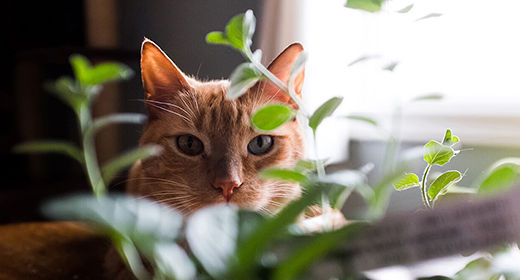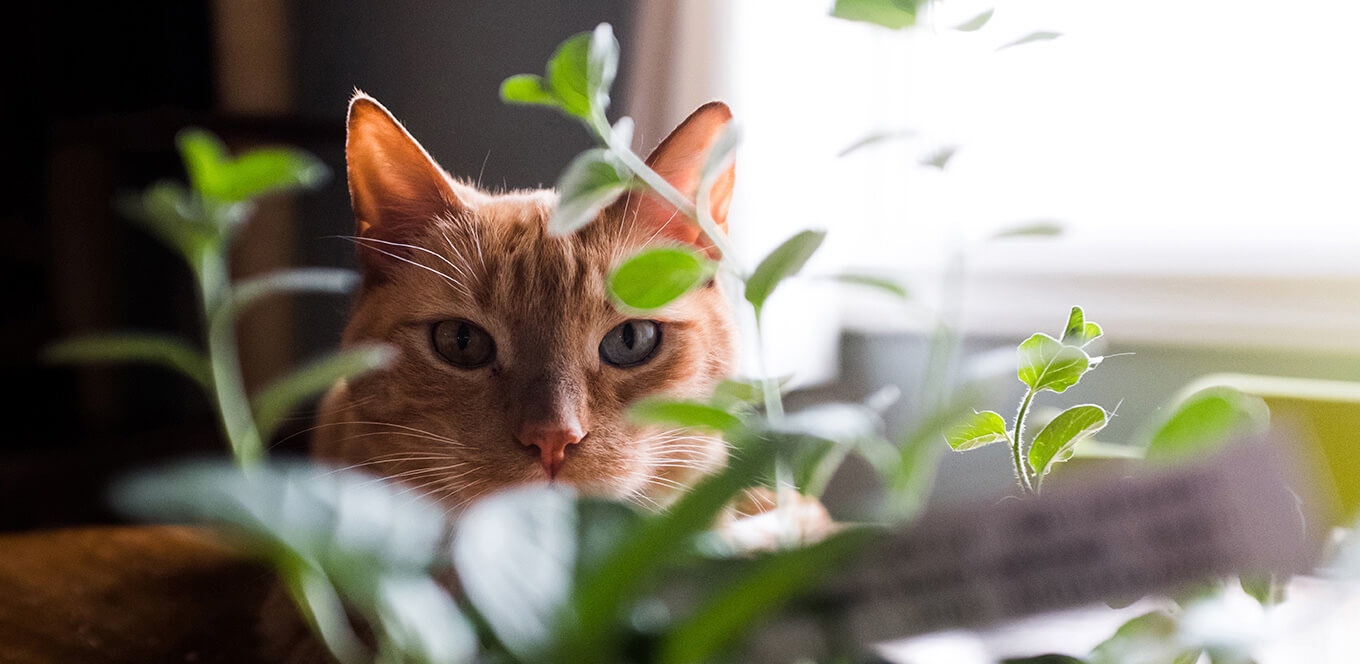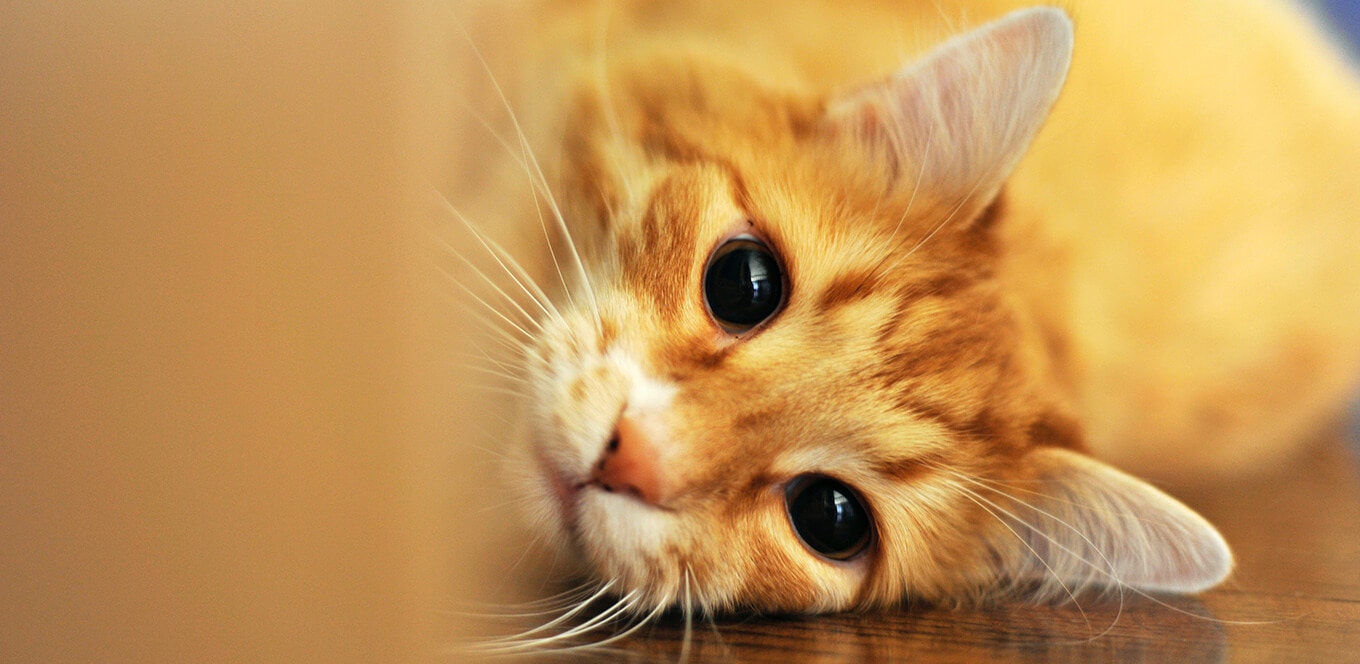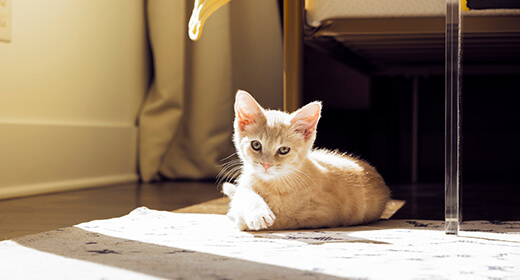

When a cat's body gets sensitive to its environment, it develops allergies. So, if you notice that your cat is feeling unwell and is constantly sneezing or scratching itself, it could be due to cat allergy reactions. These allergens are unpleasant substances that may or may not irritate you, but when your cat's body tries to rid itself of them, it may exhibit a variety of symptoms.
While it’s normal for cats to show different symptoms depending on the allergy, those that affect their breathing are the most serious ones. So, if your cat suffers from breathing issues due to allergies, it can take a life-threatening turn. Sometimes, the itchiness can also cause skin irritation leading your cat to chew on its paws or tail relentlessly.
Fortunately, cat allergy is treatable once the allergen affecting your cat is identified. Therefore, knowing how to detect if your cat has allergies and what’s causing these allergies can help you prevent problems in the future.
The first step toward treating your cat’s allergies is finding out what’s causing them. A visit to the veterinarian is the simplest way to identify your cat’s allergy stimulus.
Causes of cat allergies could be due to several reasons, all of which fall under one of the three categories. These categories are, namely – flea allergy, food allergy, and environmental allergy (atopic dermatitis).
One of the most common cat allergy signs is flea allergies. These allergies are generally caused by flea bites or flea treatment medicine. Excessive itching is the most predominant symptom of this type of allergy. It's likely that your cat is allergic to fleas if you find it scratching or frequently chewing on its fur, especially directly above the tail.
Food allergies in cats can cause vomiting, diarrhea, and even itchy skin, especially around the neck and head. This type of allergic response might cause your cat to shed patches of fur in severe circumstances. In such extreme cases, your vet can help you detect which foods are causing irritation and develop an appropriate diet for your cat.
Environmental allergies may have different triggers, including plants, pollen, and mold. This type of allergy can also be induced by cleaning products, or the fragrance included in some types of cat litter. Another type of environmental allergy is feline atopy. It is commonly known as feline atopic dermatitis, a severe allergic reaction in cats that causes extreme itchiness in their skin. As a result of this condition, your cat may suffer from skin soreness, redness, scabbing, and even hair loss.
Depending on the kind of allergy your cat has, symptoms can range from unpleasant to life-threatening.
Diarrhea is frequently related to staining of the fur around the hind end in some breeds. In normal cats, you can observe some variation in the consistency of their stool. Dietary changes can also cause temporary changes in their stool. But, if you notice frequent semi-liquid or liquid stools for more than two days, you should consult your vet.
There are different causes to why a cat makes a wheezing sound. It could be due to a hairball stuck in its stomach or allergens like pollens, mold, or cigarette smoke. However, this wheezing sound can also be linked to discomfit or stress. Because each cat's triggers are unique, it's critical to be aware of the surroundings and activities in your cat's environment that could be causing stress-related wheezing.

Watery or glossy-looking eyes are other prominent cat allergy signs. While a cat's moist eyes maybe caused by allergens such as mildew dust or household cleaning products, it could also indicate something more serious, such as a bacterial illness or virus.

Itchiness or skin redness in cats is associated with a skin condition called cat dermatitis. When this happens, your cat’s skin becomes swollen, red, and irritated, often with small blisters, as a result of an external agent directly irritating the skin or causing an allergic reaction to it.

If your cat is suffering from moderate allergy symptoms with only limited itching, medicated shampoos or rinses can help.
Anti-itch and anti-inflammatory medicines such as corticosteroids are particularly effective in treating extreme itchiness in cats. When used correctly, they can be quite safe and effective in cats. Consult your vet to identify the best course of action.
Treating your cat with flea preventatives will prevent your cat from being bitten by fleas. Plus, to lessen the chances of your cat being bitten, you should treat your home during the warmer months when fleas are more frequent. In fact, even cats who aren't allergic to fleas should use a flea preventative to avoid tapeworm and other flea-related illnesses.
To figure out which food is causing your cat's allergies, you must first put it on an elimination diet. After that, gradually reintroduce food items until you find the problematic allergen. The top three allergenic protein sources are beef (18%), fish (17%), and chicken (5%). Avoiding these foods will enable your cat's allergic reaction to be less severe.
The most common allergy symptoms in cats are skin reactions, regardless of the cause, and they can appear at any age. Just because your cat didn’t have allergies as a kitten doesn’t mean she won’t have them as an adult. If your cat suffers from any of the following symptoms, take her to the vet for a consultation:
Allergies can vary from cat to cat, so it is important that you work with your vet to make sure your cat gets the best possible treatment. You’ll both be happier as a result.


Cats are sensitive to a wide range of allergies. Cats, like people, can be allergic to a variety of foods, drugs, plants, and other things. However, flea, environmental, and/or food allergies are the most common allergies in cats.
Keeping your home clean, using dust-free and unscented cat litter, using flea preventatives regularly, avoiding excessive fragrances, and not smoking in the house can help keep your cat from being allergic.
If your cat suffers from allergies, some of the most frequent allergic reactions will trigger certain behaviors, conditions, and even symptoms like:
It depends on whether your cat has skin or food allergies. If your cat eats nothing but novel food and water for eight to ten weeks, the allergic symptoms in its skin will fade away. But if it is related to food allergies, then you need to find a diet that works for your cat and stick to it.
Most cats with inhalant allergies are allergic to a variety of allergens. Itching may only persist just several weeks at a time during one or two seasons of the year if the number of allergens is low and seasonal. The cat may scratch frequently if there are a lot of allergens or if they are there all year round.


When you snuggle up to your new feline friend and notice them scratching a tad too often, it might be a sign of kitten fleas. Along with causing itching and discomfort, this dreaded parasite can also transmit diseases. In fact, during extreme cases, fleas can even cause anaemia, especially in little ones like kittens. However, don't worry, we have the purrfect guide for you to handle these pesky invaders.
Before jumping to any kitten flea remedy, you must evaluate the situation. Depending on your kitten's age and weight, your approach will vary.
Points to remember:
Kittens under 12 weeks should not be introduced to chemical flea prevention products.
Always check product guidelines to ensure they are suitable for your kitten’s age and weight.
Only use products designed for cats, as our feline friends process chemicals differently than dogs.
Comb your kitten: A fine comb can effectively remove visible fleas.
Bathe your kitten: If your kitten is of suitable age, use a flea and tick shampoo made for sensitive skin. For younger kittens, you might want to try non-medicated, tear-free soaps like a baby shampoo.
Clean the environment: Your battle against fleas isn't just on your kitten. Wash all bedding in hot soapy water and vacuum carpeted areas thoroughly. Empty vacuum bags or canisters outside. Sprays can help eradicate fleas and their eggs indoors.
Protect the Yard: Even if your kitten is an indoor kitty, fleas might sneak in from outside. Using sprays can be an effective way to safeguard your yard.
When it comes to flea treatment for kittens under 12 weeks, options can be limited. Young kittens are particularly sensitive, and many treatments suited for adult cats can be harmful to them. Here's how to proceed:
For kittens under 8 weeks old, your safest bet is to use a flea comb. This tool, when dipped in hot, soapy water between brushes, can help you physically remove and kill off adult fleas.
Another effective method for very young kittens is bathing. A gentle bath with warm water and a fragrance-free dish liquid or natural baby shampoo can be effective in reducing the flea population. However, be sure to make this a quick affair to prevent your kitten from getting overly cold or scared.
Natural sounds great, doesn't it? But here's a cat-sized caution: Avoid essential oils as a kitten flea remedy. Many essential oils are toxic to cats, even in minimal doses. Some flea treatments boasting 'natural' ingredients might contain these oils, which could pose risks for your kitten. Always read labels and, when in doubt, consult with your vet.
For kittens older than 8-10 weeks and weighing more than 1.5-2 pounds, topical treatments become an option. A golden rule here is always to ensure the chosen product matches your kitten's age and weight.
It's essential to strike a balance between effectiveness and safety. Prescription treatments from your veterinarian typically offer the most robust protection against fleas. However, there are over-the-counter options available, which might be more accessible for some pet owners. No matter your choice, the key is to read labels carefully and avoid harmful ingredients, such as permethrin and certain essential oils.
Fleas might be pesky, but with knowledge, patience, and the right tools, you can keep your kitten flea-free and happy. Always keep your veterinarian in the loop and ensure any treatment or remedy you use is age and weight appropriate. Remember, a flea-free kitten is a happy kitten!